|
|
|
Throughout history, the pearl, with its warm inner glow and shimmering iridescence, has been one of the most highly prized and sought after gems. Countless references to the pearl can be found in religions and mythology of cultures from the earliest times.
According to legend, Cleopatra had a friendly bet with lover Marc Anthony over who could consume the most expensive meal. While Marc Anthony brought in many fine foods of great wealth, Cleopatra arrived with just a goblet of wine. She dissolved a pearl within it, and drank it, thus winning the bet. The ancient Egyptians valued pearls so much that they were often buried with them.
In ancient Rome, pearls were considered the ultimate symbol of wealth and social standing. The Greeks associated the pearl with love and marriage. During the Dark Ages, knights often wore pearls, believing that the magic possessed by the gems would protect them from harm on the battlefield. Several European countries, during the Renaissance, forbade the wearing of pearls by anyone not royalty.
To the Ancient Persians, pearls symbolized moon and its magical powers. The fragment of oldest known pearl jewelry now displayed at the Museum of Louvre in Paris was found in the sarcophagus of a Persian princess who died in 520 BC.
The pearl has also found it’s way into the art world, as The Girl with a Pearl Earring, one of Dutch painter Johannes Vermeer's masterworks. The mysterious painting which, much like Da Vinci’s Mona Lisa features no story or context uses a pearl earring for a focal point. The painting is currently housed at The Mauritshuis in The Hague. A novel by Tracy Chevalier, and a film directed by Peter Webber, and starring Scarlett Johansson and Colin Firth, followed.
The Pearl, by John Steinbeck, is a novella that tells the story of a poor Mexican who finds a magnificent pearl which changes his life on such a basic level, only enhances the sometimes dark majesty of the pearl.
|
|
|

A Tahitian Cultured Black Pearl is obtained by means of a grafting operation performed by the Pinctada Margaritifera, the "Black Lipped Oyster" of French Polynesia. The oyster that produces the Tahitian Black Pearl can grow up to 12 inches in diameter (and weigh 10 lbs), as opposed to 3 inches for the "Akoya" oyster that produces white pearls, therefore allowing a larger nucleus to be implanted.
|
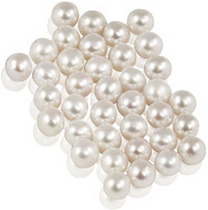
Japanese Cultured Pearls, are originally associated with The Japanese Cultured Pearl Industry (like Akoya pearl, or Mikimoto pearl). Colors include white, cream, gold, and rose. The sizes are generally smaller than south sea pearls. Large sized pearls are rare.
|
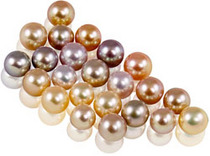
Freshwater Cultured Pearls, are farmed in freshwater and grown in mussels, as well as oysters. The irritants and the oysters used in making freshwater pearls are smaller than saltwater pearls. Freshwater pearls cultivating technique usually produce twenty or more pearls in one oyster, and it only takes one and a half years to two years to harvest.
|
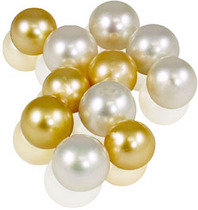
Saltwater Cultured Pearls, are farmed in saltwater, and grown in oysters. Only one pearl is grown per oyster. It need more than two years and a half to get a good harvest (it means the pearls already have thick nacre). That causes saltwater pearl farming are more expensive than freshwater pearl. The colors are white, cream, yellow, gold, silver, rose and black. Countries known as producer of saltwater pearl are Burma, Indonesia, Thailand, and Philippines in South East Asia; Australia and Tahiti in South Pacific, especially in Tahiti, you'll find the beautiful black pearls.
|
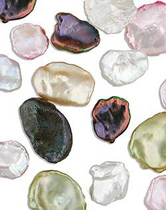
Keshi Pearls, are very small pearl byproduct of the pearl culturing process. If debris enters an oyster while it's open during the harvesting process, the oyster covers the debris with nacre, thus creating keshi pearls.
|
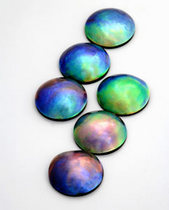
Mabe Pearls, are created when human attaches a plastic dome to the inside shell of an oyster, which reacts by covering the dome with nacre. When harvested the mabe is cut off from the shell, and the inside filled with plastic or other material, to give more weight, and the mother pearl are placed on the back of the mabe pearls.
|
|
